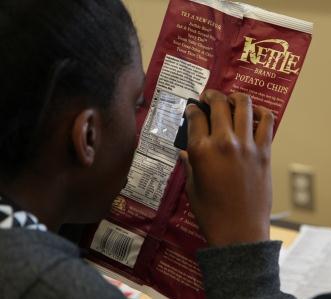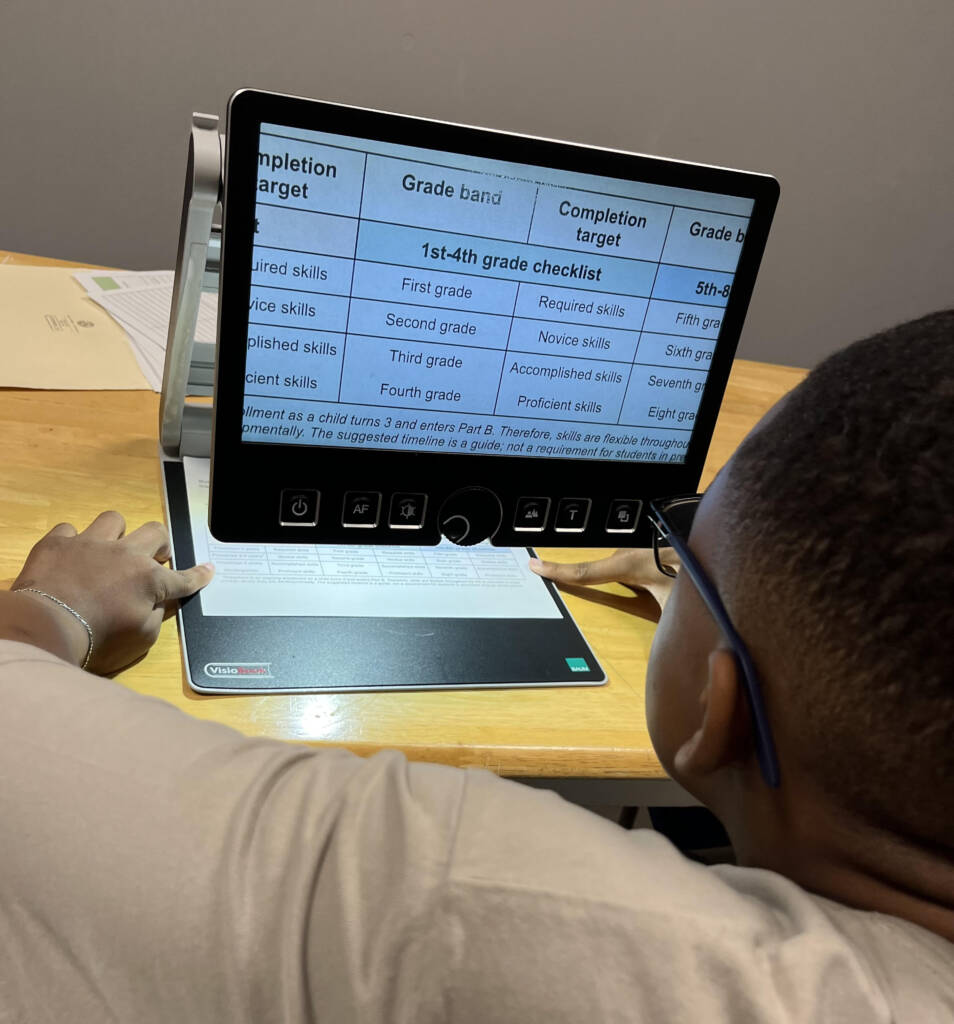A Functional Vision Assessment and Learning Media Assessment should be done for each student, and these generally offer specific suggestions for optimal visual functioning, including magnification, lighting, font size, color preference, and ideal environmental conditions. The individual needs of a student will depend on factors such as his or her eye condition, age, learning style, and additional learning challenges.
Strategies for Reading Print
There are a variety of ways in which students with low vision can access print, and many students will use different strategies in different situations. For example, out in the community, they may prefer to use spot magnification to check menus or prices, but in school they may prefer to use text books in large print. A CCTV (Close-Circuit Television) or other form of video magnification may be the preferred way to view graphics or a text in school that is not available in large print. It is often necessary for the student to try different tools in various circumstances in order to be part of the decision-making process about what works best.
In their document Reading Strategies for Students with Visual Impairments: A Classroom Teacher’s Guide, SET-BC (Special Education Technology British Columbia), a provincial resource program of the BC Ministry of Education, outlines strategies for paper materials, as well as e-text, as outlines below:
Instructional strategies for paper materials include:
- Provide regular print
- Use hand-held magnification with regular text
- Enlarge Small Amounts of Text, Pictures, Diagrams, Charts on Photocopier
- Provide Large Print Version of the Text
- Use Stand-alone Video Magnification
- Use Video Magnification with Computer Integration
Additional strategies for e-text, include:
- Change Appearance of Text and/or Background
- Magnify Text and/or Computer Screen
- Provide E-text with Tracking Support or Highlighting
- Provide E-text with Auditory Support
Environmental Factors
The Functional Vision Assessment will include specific strategies and suggestions for the individual student, based upon his or her visual condition, the type of educational program, the child’s age, and other challenges the student may face. The needs of each student will be different depending on the eye condition, but in general it is necessary to consider the following:
- Glare
- Contrast
- Lighting
- Positioning
- Reducing Visual Clutter
- Visual Cues
- Self-Advocacy
For more information, see this webcast from Perkins: Adapting Environments for Individuals with Vision Loss. In this webcast, Darick Wright, Coordinator of the New England Eye Clinic at Perkins, talks about the design issues that should be considered for individuals with vision loss. Darick provides some general guidelines as well as some specific examples in his presentation on this topic.
Font
When determining which font to use, it is important to look at both the size and the type of font.




